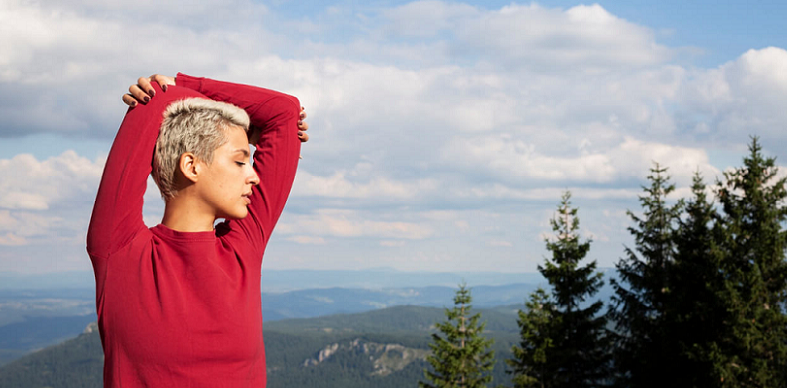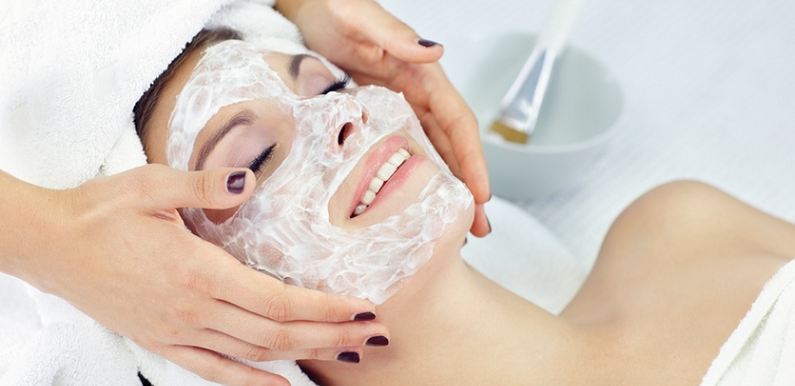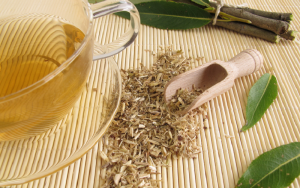
Skincare is a subject often overlooked but tremendously important for those living, or planning to live, in higher altitude environments. Understanding how the height above sea level impacts your skin and the best practices to maintain its health and beauty are important topics for anyone living in or visiting mountainous regions.
Contents
- Introducton to High Altitude Skincare
- The Science Behind Altitude Changes and Your Skin
- How High Altitude Living Can Affect Different Skin Types
- Addressing Common High-Altitude Skin Problems
- Skincare Routines for High Altitude Living
- Essential Skincare Products for High Altitudes
- Healthy Lifestyle Habits to Complement Skincare at High Altitudes
- References
Introducton to High Altitude Skincare
The beauty of the mountains, with their crisp air and stunning vistas, is undeniable. However, living in such elevated environments presents unique challenges, one of which is maintaining healthy skin. As we climb higher, our skin faces numerous changes that can lead to dryness, sun damage, and premature aging, among other issues.
Your skin is your body’s largest organ and first line of defense against external factors. It constantly interacts with the environment, meaning changes in climate and altitude can significantly impact its condition. Many of us overlook the influence of altitude on skin health, focusing instead on factors like sun exposure, humidity, and temperature. However, as we’ll uncover in this blog post, altitude changes significantly affect your skin’s hydration and susceptibility to sun damage, necessitating specialized care. Understanding these altitude-related challenges is the first step towards achieving resilient, healthy skin in mountainous regions.
The Science Behind Altitude Changes and Your Skin
Understanding how altitude changes affect your skin requires a basic grasp of what happens as you ascend in elevation.
Explanation of Altitude Changes
As you ascend, the atmospheric pressure decreases, resulting in a reduction in the oxygen available for your body and skin cells. This change can disrupt the usual functions of your skin, leading to a series of dermatological challenges. The lower humidity often found at higher altitudes also contributes to skin dehydration, which is a significant concern for mountain dwellers.
The Effects of Altitude on Skin Hydration
Hydration is key to keeping our skin healthy and radiant. The skin’s outer layer, the stratum corneum, contains water and acts as a barrier to prevent further water loss from the deeper layers of the skin. However, the low humidity commonly found at high altitudes can disrupt this natural hydration process, leading to drier skin.
When humidity is low, the dry air around can pull moisture away from your skin, leading to trans-epidermal water loss. This phenomenon results in the dry, flaky skin often seen in individuals living at high altitudes. It can also exacerbate existing skin conditions like eczema and psoriasis. Furthermore, decreased oxygen levels at high altitudes may reduce the overall health and vitality of the skin, leading to a dull complexion [1].
The Role of Sun Exposure at High Altitudes
It’s not just the lower atmospheric pressure and humidity levels that affect your skin at high altitudes. Another crucial factor to consider is sun exposure. For every 1,000 feet above sea level, UV radiation exposure increases by about 4%. This means that at an altitude of 10,000 feet, you’re exposed to 40% more harmful UV rays than at sea level.
Increased UV exposure can lead to accelerated skin aging and heighten the risk of skin cancers. Moreover, UV rays can break down collagen and elastin, the structures that give your skin its plump, youthful appearance. Therefore, sun protection becomes increasingly important the higher you climb [2].

How High Altitude Living Can Affect Different Skin Types
Everyone’s skin is unique, and the impact of high-altitude living can vary depending on your skin type.
Dry Skin at High Altitudes
If you have naturally dry skin, the low humidity at high altitudes can exacerbate your condition, making your skin even drier. Reduced moisture in the air combined with increased trans-epidermal water loss can lead to increased skin tightness, flaking, and potential cracking. Therefore, hydrating and nourishing your skin becomes even more critical when living at high altitudes.
Oily Skin at High Altitudes
Those with oily skin might initially appreciate the drying effect of the high altitude environment, as it can lead to less visible oil on the skin. However, this can be a double-edged sword. As the skin becomes dehydrated from the dry air, it might respond by producing more sebum, leading to an oily surface and potential acne breakouts. Balancing moisture levels without exacerbating oil production is crucial for this skin type at high altitudes [3].
Sensitive Skin at High Altitudes
People with sensitive skin may find the high-altitude environment particularly challenging. The harsh conditions can further irritate sensitive skin, leading to redness, inflammation, and increased susceptibility to sunburn. The decrease in atmospheric pressure might also exacerbate some skin conditions like rosacea. Thus, taking extra precautions to protect, soothe, and calm the skin is paramount for those with sensitive skin living at higher altitudes.
Combination Skin at High Altitudes
Combination skin – characterized by an oily T-zone (forehead, nose, and chin) and dry cheeks – might become more complicated at high altitudes. The dry parts of your skin could become drier, while the oily parts may become oilier due to compensatory sebum production. Managing combination skin at high altitudes requires a careful balance of hydration and oil control in the respective areas [4].

Addressing Common High-Altitude Skin Problems
Life at high altitude can be adventurous and refreshing, but it can also bring about several skin-related concerns. Knowing how to address these common high-altitude skin problems is crucial to maintaining a healthy complexion.
Dealing with Dryness and Dehydration
As discussed earlier, the dry air at high altitudes can lead to dehydrated, flaky skin. Hydrating your skin with the right products is key. Opt for rich moisturizers and creams that contain ingredients like hyaluronic acid, ceramides, and glycerin, which help to retain moisture. Also, consider incorporating a humidifier in your living space to combat the dry air indoors.
Managing Increased Sun Sensitivity
Increased UV radiation at higher altitudes can cause severe skin damage, including sunburn, hyperpigmentation, and premature skin aging. Regularly applying a broad-spectrum sunscreen with a high SPF is crucial. Look for sunscreens that shield from both UVA and UVB rays. Also, consider wearing wide-brimmed hats and UV-protective clothing when outdoors for additional protection [5].
Remedying Altitude-Induced Acne
As we’ve explored, the body might react to the dry conditions at high altitudes by producing excess sebum, leading to acne. Using non-comedogenic moisturizers can help hydrate the skin without clogging the pores. Additionally, incorporating a salicylic acid cleanser can assist in unclogging pores and reducing acne breakouts.
Preventing Early Signs of Aging
The combination of increased UV radiation and dry conditions at high altitudes can accelerate the aging process of the skin, leading to fine lines, wrinkles, and loss of elasticity. Regular use of sunscreen, as mentioned, is vital in preventing premature aging. Moreover, consider integrating products with ingredients like retinol, vitamin C, and peptides into your skincare routine. These ingredients promote collagen production, brighten the skin, and improve elasticity, counteracting signs of aging.
Skincare Routines for High Altitude Living
Living in a mountainous region necessitates a skincare routine that addresses the unique challenges presented by the altitude.
Daily Skincare Routine for Mountain Living
A daily skincare routine at high altitude should focus on hydration, sun protection, and nourishment. Let’s break it down into a morning and evening routine.
Morning Routine
- Cleanser: Start your day by gently cleansing your face. Opt for a hydrating cleanser that won’t strip your skin of its natural oils.
- Toner: Apply a hydrating toner to balance your skin’s pH levels and prepare it for subsequent products.
- Serum: Use a hydrating serum with ingredients like hyaluronic acid to help your skin retain moisture throughout the day.
- Eye Cream: Apply an eye cream to hydrate the delicate skin around your eyes and prevent wrinkles.
- Moisturizer: Lock in the hydration with a rich moisturizer that suits your skin type.
- Sunscreen: Protect your skin from harmful UV rays with a broad-spectrum, high SPF sunscreen. This step is crucial for high-altitude living
Evening Routine
Your evening routine should focus on cleansing, repairing, and nourishing your skin.
- Cleanser: Cleanse your face to remove sunscreen, makeup, and any dirt or impurities accumulated throughout the day.
- Toner: Again, apply a hydrating toner to restore your skin’s pH balance.
- Serum: Use a reparative serum such as a retinol serum or a vitamin C serum to help your skin regenerate overnight.
- Eye Cream: Apply your eye cream to hydrate and repair the skin around your eyes.
- Night Cream: Finally, lock everything in with a nourishing night cream or oil, which will restore and rejuvenate your skin as you sleep.
Weekly Skincare Routine for Mountain Living
In addition to your daily routine, there are some additional treatments you can incorporate weekly to further enhance your skin health.
- Exfoliation: Exfoliate your skin 1-2 times per week to remove dead skin cells and promote skin renewal. This process will leave your skin looking brighter and feeling smoother.
- Mask: Use a hydrating face mask once a week to infuse your skin with additional moisture and nutrients.
Special Skincare Tips for Extreme Weather Conditions
High altitudes often come with extreme weather conditions – both hot and cold. In cold, dry weather, increase your hydration game by using more intensive moisturizers and regularly applying lip balm to prevent chapped lips. During hotter months, ensure you reapply your sunscreen every two hours, wear protective clothing, and stay hydrated.

Essential Skincare Products for High Altitudes
Arming yourself with the right skincare products is key to tackling the challenges of high-altitude living. This section will highlight some essential skincare products that should be a part of your arsenal.
Hydrating Cleansers
A hydrating cleanser helps clean your skin without stripping it of its natural oils. Look for cleansers with ingredients like ceramides and hyaluronic acid that support your skin’s moisture barrier. Also, avoid cleansers with harsh surfactants, as they can further dry out your skin.
Moisturizing Toners
A good toner can balance your skin’s pH and prepare it for the following steps in your skincare routine. At high altitudes, opt for a moisturizing toner that can give your skin an extra hydration boost.
Hyaluronic Acid Serums
Serums containing hyaluronic acid are an excellent addition to your high-altitude skincare routine. Hyaluronic acid can hold up to 1,000 times its weight in water, making it a powerful hydrator that can help your skin retain moisture [6].
Rich Moisturizers and Night Creams
Rich moisturizers and night creams are essential in a high-altitude skincare routine. These products create a protective barrier on the skin, preventing moisture loss. Look for products that contain ceramides, glycerin, and natural oils.
Sunscreen
Sun protection is crucial at high altitudes, making sunscreen an indispensable product. Go for broad-spectrum sunscreens with an SPF of 30 or higher, and remember to reapply it every two hours when you’re outside.
Lip Balm with SPF
Your lips can also suffer from dryness and sun damage at high altitudes. Keep them hydrated and protected with a nourishing lip balm that includes SPF.
Exfoliants
Regular exfoliation can help remove dead skin cells and promote skin renewal. Consider gentle exfoliants with ingredients like lactic acid or glycolic acid. However, do not overdo this step as excessive exfoliation can dry out and irritate your skin.
Face Masks
Hydrating face masks can provide an extra boost of moisture to your skin. These are especially beneficial after a long day outside or when your skin feels particularly dry.
Healthy Lifestyle Habits to Complement Skincare at High Altitudes
While the right skincare products and routines play a pivotal role in maintaining healthy skin at high altitudes, your lifestyle choices can also significantly impact your skin health.
Hydration
One of the key challenges of high-altitude living is the dryness that it inflicts on your skin. In addition to using hydrating skincare products, it’s important to hydrate from the inside out. Drinking plenty of water can help maintain your body’s overall hydration levels, benefiting not just your skin but your entire body’s function. Aim for at least 8 cups of water a day, but keep in mind that you might need more if you’re physically active.
Nutrient-Rich Diet
What you eat can also influence your skin’s health. Consuming a nutrient-rich diet loaded with fruits, vegetables, lean proteins, and healthy fats can provide your body with the vitamins and minerals it needs to support healthy skin function. Key nutrients for skin health include vitamin C for collagen production, omega-3 fatty acids for maintaining skin’s lipid barrier, and antioxidants to combat free radicals.
Adequate Sleep
Getting a good night’s sleep is essential for overall health, including your skin. During sleep, your body works on repairing and regenerating skin cells. Ensuring you get 7-9 hours of quality sleep each night can contribute to a healthier complexion and help combat signs of skin aging.
Regular Exercise
Exercise increases blood circulation, which can help nourish your skin cells by delivering more oxygen and nutrients to them. Regular physical activity can also help flush out toxins through sweat, promoting a healthier and more radiant complexion. Whether it’s hiking, yoga, or any other form of exercise that you enjoy, aim to get active regularly.
Limiting Alcohol and Caffeine Intake
Alcohol and caffeine can dehydrate your body and, consequently, your skin. Try to limit your intake of these beverages and opt for hydrating alternatives instead, especially when you’re living at high altitudes.
References
[1] Why Higher Altitudes are So Hard on Your Skin
[2] High Altitude Dermatology
[3] Skin At Altitude
[4] What I Wish I Knew About Skin Care Before Moving to the Mountains
[5] Everything You Need To Know To Protect Your Skin At Altitude
[6] High-Altitude Skin Care







